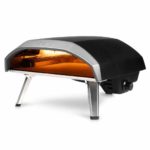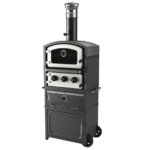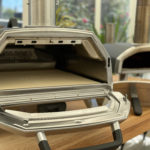How To Make A Pizza Box (A Quick Tutorial)
Making your own pizza box may seem like a daunting task, but it is actually quite simple and fun!
All you need are some basic supplies and an imagination to get started. With just a few materials, including cardboard sheets, ruler, pencils and scissors (or glue or tape), you can create your very own custom-made pizza box for all occasions.
And in this short guide, I will show you how. Let’s take a look.
Materials Needed And Preparations
Cardboard Sheets
When selecting corrugated cardboard boxes for your pizza, it’s important to consider factors such as thickness, size, venting holes and temperature resistant coating options– all combining into one strong yet lightweight solution.
You can choose double wall corrugation if you need extra resilience in protecting fragile food items along with other forms of protection like cushion lining or dividers if necessary.
For most standard servings of pizzas up 20 cm by 30 cm, single wall corrugation should suffice.
Ruler
Using a ruler is an important step in making a pizza box. It helps to ensure that the cardboard sheets are accurately measured and cut for consistent pieces of the right size, shape, and proportion necessary for creating the box.
The length of each line needs to be exact when it comes to folding and gluing all sides together. If these measurements are not accurate enough, then the resulting pizza box may become unstable or unusable due to irregularities.
Additionally, ruler can help create straight edges with ease if scissors are used as well for cutting out shapes . This makes constructing a strong and reliable pizza box simpler than without its use.
Scissors
Scissors are a must-have for DIY projects, and that includes making a pizza box! Pizza scissors are designed specifically for cutting through fresh ingredients with ease.
They come in different types, from traditional metal blades to electric pizza cutters, so you can choose one based on your needs. If you’re looking to make precise cuts quickly, then investing in a professional cutter could be the way to go.
In terms of slicing up pizzas for boxes, standard kitchen shears will do just fine as they offer precision cutting without damaging the base or toppings.
Glue Or Tape

When making a pizza box from cardboard, using adhesive or sticky tape to secure the corners can help ensure that it is strong and durable. Glue is stronger and takes longer time to set; however, for those wanting faster results, tape might be preferable.
Commonly used adhesives include white glue made from flour, natural rubber glue (a combination of aliphatic resin and latex), contact cement which contains solvents or water-based acrylic emulsions.
Specialty glues like woodworker’s glue contain polyvinyl acetate chemicals while hot melt glue guns feature adhesives that are controlled with heat.
Tape comes in different varieties such as packing tape, duct tape, masking tape (made for painting a surface), and more.
Double-sided tapes come in sheets where one side has an adhesive coating held between two pieces of tissue paper that may or may not have an added release agent applied before lamination for easy removal after serviceability requirements are met.
Measuring And Marking The Cardboard
One of the first steps when making a pizza box is to measure and mark the cardboard. This step is essential for ensuring that your box will be the right size and shape, as well as sturdy and functional enough to contain large-sized pizzas.
Using a ruler and pencil, you need to draw 1-inch lines on each 12-inch side of the cardboard sheet – one inch from the edge, then another line at 5 1/2 inches and 7 ½ inches from that initial line.
Then cut along these lines with scissors or a cutting tool to make four equal parts.
Cutting And Folding The Cardboard
Creating a pizza box requires precision and accuracy. To start, you will need to measure and mark your cardboard sheet. For a standard-sized pizza box with dimensions of approximately 100 x 50 cm, use a ruler and pencil to draw the desired measurements on the cardboard.
Cut along those lines to produce four equal pieces for assembling the lid and base of the box. Once cut, score each square along its lengthwise centre using a pen or knife in order to allow easy folding since it is essential that all edges line up correctly when folded together at right angles into a rectangular shape.
When scoring this fold line, ensure there are no raised ridges left behind by running over these marks until smooth before folding them in place.
Assembling The Pizza Box
Creating The Lid And Bottom Of The Box
Creating the lid and bottom of a pizza box is an important, but often overlooked step in making one. To ensure that your box is sturdy and functional when finished, you need to make sure it’s constructed properly from the start.
Before beginning, gather all the necessary materials including cardboard sheets, a ruler, pencils, scissors, glue or tape. Then measure and mark your cardboard with a pencil using a ruler before cutting and folding it as this helps ensure accuracy for an even finish later on.
When cutting out the individual pieces of cardboard for each side of the pizza box (including six sides), take care to keep them even on both edges after being cut – any crooked lines could cause problems during assembly! You can use either glue or tape along seams to provide added strength when joining two pieces together.
Securing The Corners With Glue Or Tape
Assembling your own pizza box requires careful attention to detail, including securing the corners with glue or tape.
To do this correctly, you will need a few materials upfront: cardboard sheets, ruler and pencil for measuring and marking the cardboard, scissors for cutting and folding the pieces accurately, as well as some glue or strong packaging tape.
When it comes time to secure the four corners of the box together—which ensures that its shape stays true during gravity-defying deliveries—it is important to use an adhesive material such as wood glue or waterproof polyurethane liquid construction adhesive for strength.
Alternatively, heavy-duty packing tape can also be used if it’s reinforced with fibers.
Tips For A Sturdy And Functional Pizza Box
Use Thick Cardboard For Better Durability
Thick, sturdy cardboard is a superior material for pizza boxes. It provides good durability and strength-to-weight ratio in comparison to other materials like spongy paperboard or flimsy plastic.
The inner liner of corrugated cardboard also adds protection and keeps the pizza warm inside the box. Square-shaped pizza boxes made out of one sheet of cardboard are generally better than those requiring multiple pieces; this construction saves on material usage which ultimately reduces costs and allows them to be recycled together as one unit.
Premium paperboard can even be used to make ecofriendly compostable boxes that decompose over time instead of piling up in landfills or recycling centers.
Ensure The Box Is The Right Size For Your Pizza
Choosing the right size pizza box is incredibly important for any setting, be it large-scale takeout or a home delivery. A box that is too small will cause the pizza to become flattened and unappetizing, while one that’s too big will give room for bad insulation and a lack of stability.
To determine the proper size of your container, measure out the diameter of your pizza and add two inches on either side to make sure you leave plenty of breathing space.
This practice can help maintain the temperature longer so guests enjoy their meal as if it had just come out from oven. It’s also worth considering custom printed boxes since they are an excellent way for branding pizzas and adding extra chances to promote customer loyalty.
Consider Adding Ventilation Holes To Prevent Sogginess
Adding ventilation holes to pizza boxes is an essential step if you want to avoid sogginess. The science behind this is simple: when steam accumulates in the box, it affects the temperature of the pizza and makes its crust go soft.
As a rule of thumb, aim for two large holes on either side of your box’s lid and four smaller ones at each corner along its bottom; these sizes should be enough to effectively lower humidity levels without being too big and compromising insulation or heat retention.
Or alternatively try using corrugated cardboard; not only does it possess great insulating properties but also helps prevent air circulation — which reduces moisture build-up and keeps pizzas warm for longer periods of time.
Conclusion
Pizza boxes are one of the most commonly used disposable items, and because of that, they easily end up in landfills when not recycled correctly. One of the best ways to dispose of pizza boxes is by recycling them for a more sustainable waste management approach.
In order for your pizza box to be accepted into a recycler’s facility, it needs to be totally grease-free and food-residue free. These elements prevent the cardboard from being fully recycled or composted which can lead to hazardous consequences such as increased methane in the environment.
Luckily, with minimal effort you can help preserve our planet’s resources while still enjoying hot slices at home – all you have to do is remember to recycle your empty pizza box after use!
Following some simple steps like soaking up excess grease with a paper towel or napkin before tossing it into the recycling bin helps ensure proper disposal and prevents penalty fees due to contamination.






